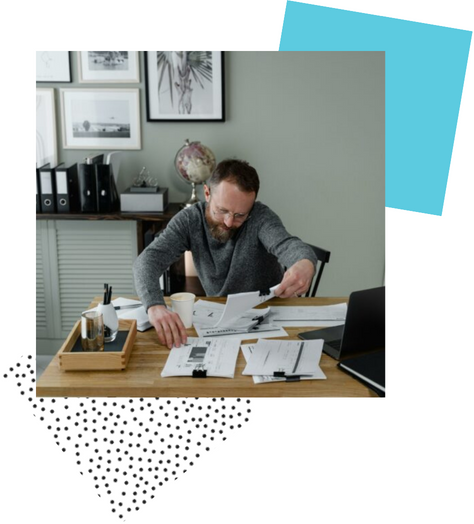Testing and validating your idea is a critical step of building a business. You need to conduct research to gauge whether there is demand for your product and how customers will use it.
It’s best to go through this process at an early stage, so you don’t sink too much time and money into an idea that doesn’t have legs.
However, conducting research on your idea is easier said than done. There are plenty of hazards to avoid along the way, from biased customer feedback to simply getting stuck in your own head about what your product should look like.
This blog post explains how to test and validate your startup idea, from setting goals to finding research participants and implementing feedback.
Write down your goals and assumptions
The first step is to create a list of your goals and assumptions. This will help you to narrow down the scope of your research and stay focused on what’s most important to learn.
Here are five questions you could start with:
- What problem is my product solving?
- Who is my target demographic?
- What assumptions do I have about the target demographic?
- How is my product different from others on the market?
- How much are people prepared to pay for my product?
By answering these questions, you’ll have a good idea of what assumptions you need to test. The process should also help you to articulate the value and unique selling proposition of your product.
Testing your assumptions
The next step is to test your assumptions in the real world.
There are hundreds of different ways to approach this, but not all of them will give you effective results. We’ve outlined three of the most common places to start.
Talk to potential customers
Interviews and surveys are a useful way to learn about customer challenges, motivations and needs. But as Rob Fitzpatrick points out in The Mom Test, trying to learn from customer conversations is like excavating a delicate archaeological site – the truth is down there, but it’s fragile.
If you’ve ever been stopped in the street and asked to try a new product, you’ll know that giving positive feedback is almost instinctive. You end up telling people what they want to hear, because it’s the polite thing to do – not because it’s how you really feel.
While talking to customers might seem like the easiest way to validate your idea, it’s actually the trickiest method to get right. Customer conversations will almost always give you a green light and convince you you’re on the right track, even if you’ve veered wildly off course.
So what can be done about it?
Rob recommends following these three simple rules for customer conversations:
- Talk about their life instead of your idea
- Ask about specifics in the past instead of generics or opinions about the future
- Talk less and listen more
Shaping your customer questions
The key with customer questions is to hold off talking about your idea until the last minute. That way, you’ll get genuine insight into how customers think, act and feel, without biasing their answers towards your product.
Here are a couple of example questions to get you thinking.
“Talk me through the last time ‘X’ happened”
There’s a world of difference between how a customer thinks they do something and what they actually do. Asking people to walk you through a process they’ve already taken removes any hollow hypotheticals and digs into their real-life actions.
“How have you tried to solve ‘X’ problem?”
There’s a big difference between potential customers experiencing a problem and caring enough about a problem to look for a solution.
If they’ve made an effort to test out other products, there’s a good chance they’ll look at (or buy) yours. But if they haven’t gone out of their way to find a solution so far, it’s probably not an issue they care enough about.
“What’s your current solution for ‘X’ problem?”
This is a useful question to give you a ballpark on how much your customer currently spends on a solution and the sort of products you’re going up against.
Finding a range of customers
Lucy-Rose Walker has supported thousands of entrepreneurs through startup accelerator Entrepreneurial Spark. She recommends choosing a range of interviewees for research – but no family or friends.
“The number of people that you speak to is pretty important. You need to make sure that you speak to a wide array of different people who you think are within the persona.
“It’s important to ensure that they’re people you don’t know, so family and friends are out for this part of a conversation. It needs to be people who you don’t know, who you’ve never met before, so you’re just asking them their thoughts on something,” she said.
There are dedicated websites that allow you to recruit for market research, but an easy (and free) option is to ask people to volunteer via social media.
Alternatively, if you know other startup founders who work in the same space, ask them to put a note in their newsletter to recruit participants or see if they could recommend relevant people from their network.
Track landing page visits
Want to know if customers are genuinely interested in your idea? Actions speak louder than words.
A great way to test your idea is to create a simple website landing page. Highlight the benefits of using the product, plus any pain points or challenges it solves for customers. Include a form that allows customers to register their interest, take a free trial or buy the product.
Once you’ve created the landing page, set aside some budget to drive traffic to the page. Paid social media ads are a popular way of doing this, since you can target your audience by specific demographics like age, location or interests. Set a small budget for each day and tweak as necessary.
The benefit of this kind of testing is that it removes the bias that comes with face-to-face interviews. If users are willing to take action to register interest or buy your product independently, it’s a strong validation for your idea.
Create a minimum viable product
It’s natural to want a new product to be perfect. But perfection requires time, money and resources – things that most startups can’t afford to waste.
Creating a minimum viable product (MVP) allows you to test how your product concept works in practice and whether there is demand for it in your target market. You might find that customers use it in different circumstances than first thought or your product resonates with a different demographic altogether.
Either way, putting a version of your product to the test with customers allows you to refine the features and direction of your product based on concrete findings, rather than hypotheticals.
Trust the feedback and be prepared to act
Once you’ve tested your idea in a few ways, it’s crucial to accept customer responses and act on them.
Be vigilant against confirmation bias and avoid only looking at feedback that reinforces your original assumptions. It’s hard to let go of a certain idea (and all too easy to explain away any failures as people “not getting it”), so consider bringing in someone removed from the business to sense-check your next steps.
Try not to get deterred if you need to go back to the drawing board or switch focus to another market. The testing stage is all about adapting your idea until you get it right.
One of our favourite stories of founders deviating from their original plan – and succeeding – is Kafoodle founder and The Pitch 2016 winner Tarryn Gorre.
Kafoodle originally aimed to help pubs and restaurants cope with allergy legislation. However, despite the business plan being great on paper, they struggled to get traction: the legislation was delayed and their target customers were always too busy to talk.
Then Tarryn realised that they’d been so focused on the legislative aspect that she’d missed one of the most valuable applications for the business – healthcare.
Since tweaking the idea, Kafoodle has built a team of seven staff and raised £500,000 in investment. It’s a testament to what can happen when you aren’t afraid to test your idea, take on feedback and refine the product until you achieve market validation.
Did you find this blog post useful? The article is powered by Sage. Their accounting and HR software supports startups and growing businesses. It can help you understand business performance, get tax right and be more organised – find out more here!




